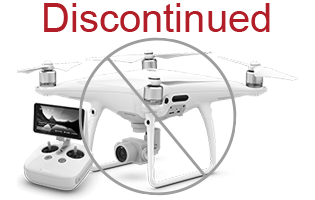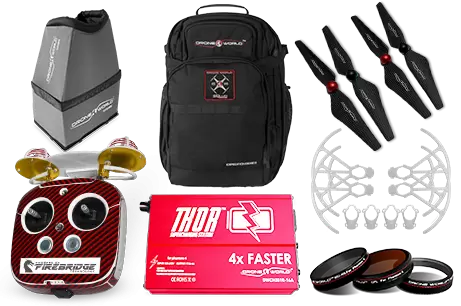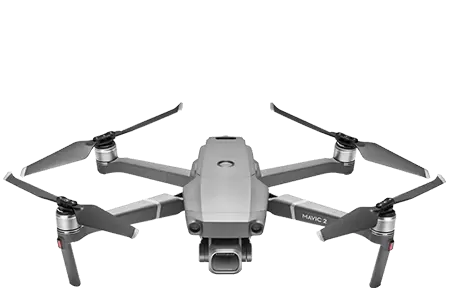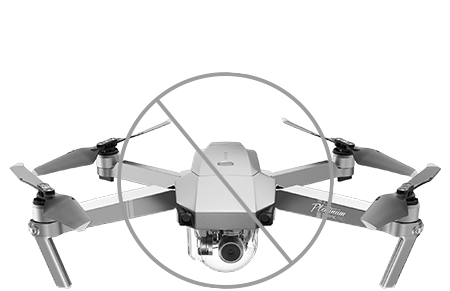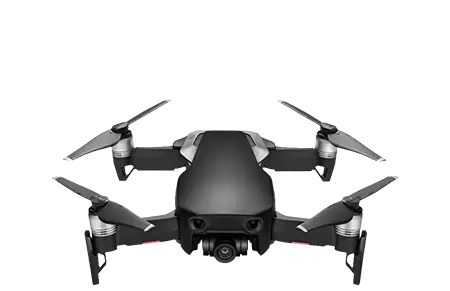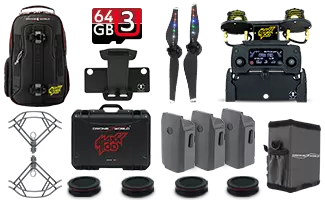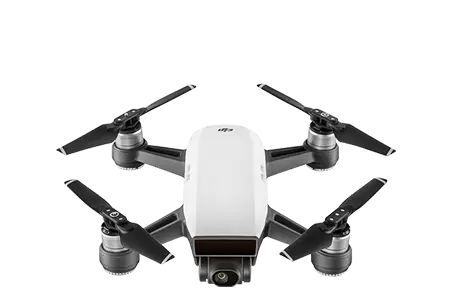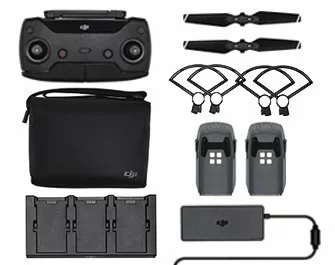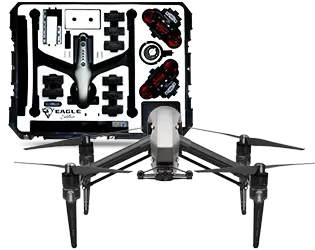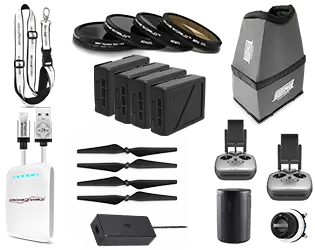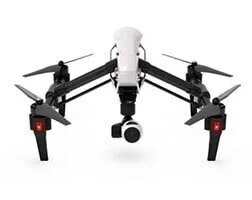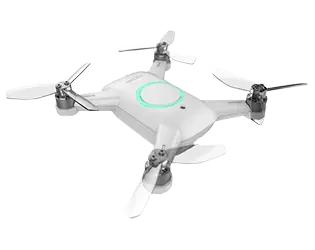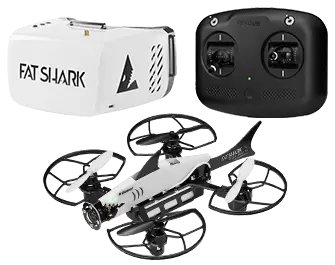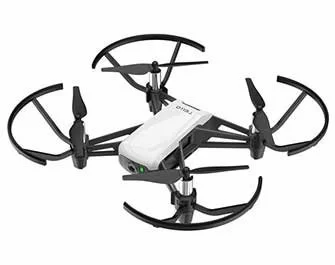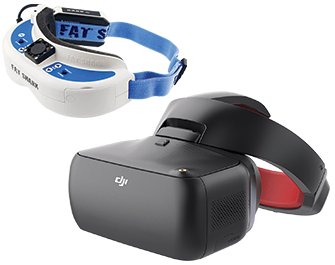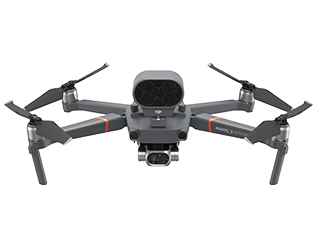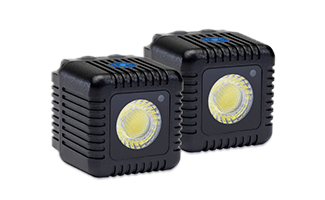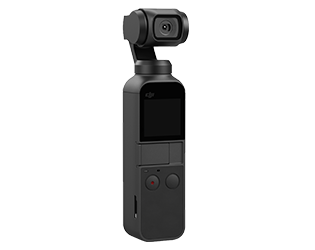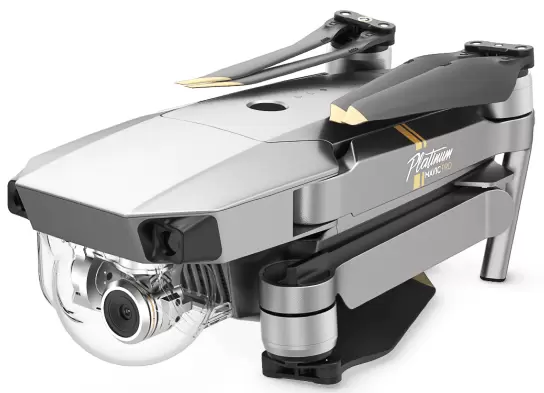DJI Mavic Pro vs. GoPro Karma Comparison
With so many drones flooding the market these days, it can be hard to know which one to choose. From the gold standard, DJI, to the camera experts at GoPro, there are many things to consider. Fortunately, we're here to help you wade through the decision making process and secure a better understanding of the pros and cons of the top drones for sale today.
As a premier high end dealer of DJI drones, we at Drone World know a thing or two about these amazing flying phenoms. Allow us to break down the differences and similarities between two competing drones: The DJI Mavic Pro and the GoPro Karma.
Introduction
It's important to have some background, to create a firm base of knowledge to conceptualize these two drones and where they come from. DJI (based in China, full name: DaJiang Innovations Science and Technology Company) is currently the global leader in drone engineering, owning 80% of the market share, even by conservative estimates. Since 2006 they've crafted great products, and their stranglehold on the drone industry has only grown in the recent years. Their Phantom series of drones are some of the most beloved drones on the planet, plus they continue to create massively popular high end models like Matrice and the Inspire 2. Most recently, the DJI Mavic Pro made a splash in November 2016, the first drone of a smaller size created by DJI with racing drone-esque proportions and speed. Undoubtedly, the Mavic Pro represents DJI's latest venture into compact drones, made to be folded up to approximately the size of a water bottle and carried with ease for a fly-anywhere mentality. Plus, with the debut of the DJI Mavic Pro Platinum, DJI has introduced an evolved version of the original with greater speed, better battery life, and a slick new chrome finish.
Meanwhile, GoPro is American-born, getting its start with wrist-based camera technology designed for taking photos during action sports like surfing, snowboarding, skydiving, etc. When they unveiled video capability in 2006 with their flagship HERO GoPro camera, they quickly became a household name in action sports-based photography. For the last decade the GoPro name has been synonymous with great action photography and videography, giving viewers gorgeous, unique perspectives; most notably from a first-person viewpoint.
Another bit of interesting background surrounds the inception of the GoPro Karma drone itself. Initially GoPro wished to collaborate with DJI, entering into discussions in 2014 to create a private label model. Once those negotiations fell through, GoPro sought the assistance of 3D Robotics for a similar partnership but this time for 3DR's flight controllers. Unfortunately 3DR failed to meet deadlines, resulting in GoPro taking complete control of the development halfway through 2015.
How Are They Alike?
In comparing these two drones, we felt it was important to evaluate how they mirror one another before diving into how they are dissimilar.
Speed: The two are comparable in overall speed, with the Mavic taking a slight edge.
Mavic: 40 mph
Karma: 35 mph
Weight: Although the Mavic Pro becomes more compact when folded, overall these two drones are in the same range for weight.
Mavic: 1.64 pounds
Karma: 2.2 pounds
As far as flying modes are considered, these two stack up pretty close to one another. The Mavic has three kinds of tracking shots: Spotlight, Profile, and Trace, while the Karma counters with Cable Car, Orbit, and Reveal. With the Mavic you can also use gestures and Terrain Follow mode, which keeps the drone at a defined height, ascending and descending as you move.
Flying Modes for Mavic-
Spotlight: Your subject is the center of attention, no matter where the drone flies.
Profile: The Mavic flies beside the subject, moving parallel and keeping the same distance away from the subject, even if they move toward it or away.
Trace: Mavic will follow behind your subject as they move away, even if they change direction. If they move towards the Mavic, it will fly backwards (but only if you've enabled BackwardsFly). Plus, while it is flying you can circle around your subject by hitting left or right on the control stick.
Terrain Follow: Keeps the Mavic at a height you define, as the ground rises.
Preset shots for Karma-
Dronie shot: comes up close, zooms out, seen in a lot of drone videos
Cable car: goes from point A to point B, while focusing on a moving subject parallel
Orbit: focus on a subject while orbiting around it
Reveal: camera follows the ground before panning up towards horizon
How Are They Different:
Flight distance: Mavic 8 miles, Karma 1.8 miles
This category cannot be understated, the Mavic Pro quite simply demolishes the Karma in its flight distance. The FCC compliant distance is 4.3 miles, which means nearly every Mavic Pro pilot won't be reaching 8 miles, but it's nice to know that it can!
Ascent height: 3.1 miles, Karma 1.98 miles
Similar to the flight distance, the Mavic wins the ascent height category, climbing higher than its GoPro counterpart. A mile higher can make a huge difference, spelling the difference between flying around a mountain or flying around it.
Flight time: Mavic: 27 minutes Karma: 20 mins
Mavic has the edge in flight time, but only just. Mavic Pro owners can tell you to take the 27 minute threshold with a grain of salt, because typical flight times tend to hover around 20, 21 minutes tops. One intriguing note is that the Mavic can fly longer while moving due to its well-designed aerodynamics.
Gimbal: Mavic: -90° to +30° Karma: -90° to 0°
Novice drone pilots won't bat an eye at the gimbal difference, but we point it out for a reason. The Mavic can tilt its camera upwards to 30°, which it does because while flying the aircraft leans forward. In this away it allows for an uninterrupted shot free of any visual impairment.
We can't forget about price, which is where Mavic shines once again. At just $999, it is a full $100 cheaper than the GoPro Karma with Hero 5 camera, which sells for $1100. Alternatively, the Mavic Pro Platinum is available for just $1099, for just a dollar less than the Karma. Learn more about the enhancements made to the Mavic Pro in our Mavic Pro vs Mavic Pro Platinum comparison.
If you already own a Hero camera, the Karma alone will come to $800. With such a short flight time for both, a second or third battery is almost a necessity; but again the Mavic bests the Karma, selling for $10 cheaper at $89 compared to $99.
Another factor is the responsiveness of the drone, of which the Mavic is again the victor. The argument could be made that the Karma has a nice smooth video because of its reduced responsivity, but the downside of that is a drone that is slow to react. A drone that is slow to react is a drone that is prone to accidents, whether the pilot runs into sudden high winds, an unexpected obstacle, or some other issue.
.
 SALE
SALE Largest Authorized Kit Dealer
Largest Authorized Kit Dealer Drone Financing
Drone Financing Free Fast Shipping
Free Fast Shipping



